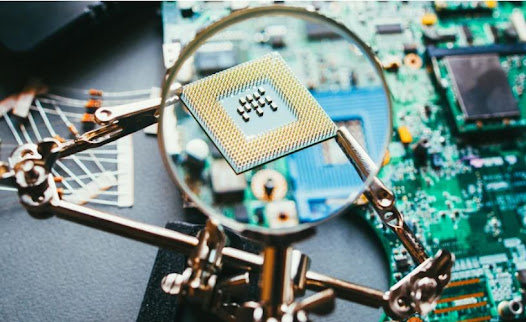Material Selection and Stack-Up Planning
Material Choice: The selection of materials is crucial, as it impacts the board's flexibility, durability, and thermal properties. Common materials include polyimide for flex layers and FR4 for rigid layers.
Stack-Up Design: This involves determining the sequence of layers, which is vital for the board's electrical performance and mechanical stability. The PCB stack-up must account for the unique properties of Rigid-Flex PCBs, ensuring a seamless transition between rigid and flexible sections.
Patterning and Etching
Circuit Patterning: The process begins with applying a photoresist layer, followed by UV solder mask exposure through a mask that defines the circuit pattern.
Etching: The exposed areas are then etched away, leaving the desired copper traces. Precision is key, as any deviations can affect the circuit's functionality.
Lamination Process
Lamination: This step involves fusing the various layers together under heat and pressure. For Rigid-Flex boards, this process is more complex due to the different materials and the need to preserve the flex areas' functionality.
Drilling and Plating
Drilling: Holes are drilled for vias and component leads. In Rigid-Flex PCBs, this step requires special attention to avoid damaging the flexible sections.
Plating: The drilled holes are then plated with copper to establish connectivity between the layers. This step is crucial for the board's electrical integrity.
Final Assembly and Testing
Assembly: Components are mounted onto the board using surface-mount technology (SMT) or through-hole technology. The assembly process must accommodate the board's flexing areas to avoid component or solder joint damage.
Testing: Rigorous testing is conducted to ensure the board meets all electrical and mechanical specifications. This includes continuity tests, insulation tests, and functional verification.
The fabrication of Rigid-Flex PCBs is a meticulous process that requires expertise and precision at every step. By understanding this process, professionals can better appreciate the intricacies involved in creating these versatile and complex circuit boards.
Common Challenges and Solutions in Rigid-Flex PCB Fabrication
The fabrication of Rigid-Flex PCBs comes with its set of unique challenges, stemming from their hybrid nature and the intricate processes involved. Identifying these challenges and implementing effective solutions is crucial for ensuring the reliability and functionality of the final product.
Challenge 1: Stress in Flex Areas
Issue: During bending and operation, stress can accumulate in the flex regions, potentially causing material fatigue or failure.
Solution: Designing with appropriate bend radii and incorporating strain relief features can mitigate stress. Materials should be chosen for their flexibility and endurance under repeated bending.
Challenge 2: Layer Misalignment
Issue: Misalignment between layers during lamination can lead to functional and structural issues, particularly at the transition zones between rigid and flex sections.
Solution: Precision in stack-up alignment and the use of alignment marks during fabrication can ensure layers are accurately aligned.
Challenge 3: Impedance Mismatch
Issue: Ensuring consistent impedance across transitions from rigid to flex sections is challenging but essential for signal integrity.
Solution: Careful design and simulation can help predict and mitigate impedance mismatches. Material consistency and controlled etching processes also contribute to maintaining impedance.
Challenge 4: Assembly and Soldering
Issue: The assembly process can introduce stresses, especially during soldering, which may damage the flex sections or lead to solder joint failures.
Solution: Using low-temperature solder and carefully controlling the assembly process can reduce thermal stress. Additionally, supporting the flex areas adequately during assembly can prevent mechanical stress.
By addressing these challenges with thoughtful design and meticulous fabrication processes, manufacturers can enhance the reliability and performance of Rigid-Flex PCBs. Continuous innovation and adherence to best practices are essential in overcoming the complexities inherent in producing these advanced circuit boards.
Conclusion
The journey through the Rigid-Flex PCB fabrication process highlights the intricate balance between mechanical and electrical engineering, demanding precision and expertise at every stage. As technology progresses, the role of Rigid-Flex PCBs will undoubtedly expand, pushing the boundaries of what's possible in electronic design and application.








